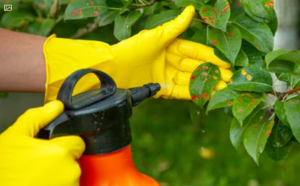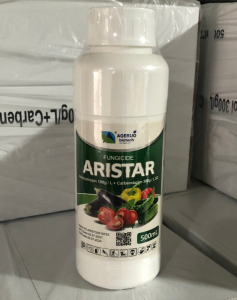Bactericidal spectrum: difenoconazole > tebuconazole > propiconazole > flusilazole > epoxiconazole
Systemic: flusilazole ≥ propiconazole > epoxiconazole ≥ tebuconazole > difenoconazole
Difenoconazole: a broad-spectrum fungicide with protective and therapeutic effects, and has good effects on anthracnose, white rot, leaf spot, powdery mildew and rust.
Tebuconazole: a broad-spectrum fungicide with three functions of protection, treatment and eradication. It has a wide bactericidal spectrum and a long lasting effect. The eradication effect is strong, the sterilization is fast, and the yield of cereal crops is more obvious. It is better to mainly target spots (leaf spot, brown spot, etc.).
Propiconazole: a broad-spectrum fungicide, with protective and therapeutic effects, with systemic properties. It is mainly used for the control of leaf spot on bananas, and is mostly applied in the early stages of disease. The effect is fast and violent
Epoxiconazole: a broad-spectrum fungicide with both protective and therapeutic effects. It is used more in field and southern fruit trees, and it is better for rust and leaf spot disease of cereals and beans.
Flusilazole: the most active fungicide, with special effects on scab
Safety: Difenoconazole > Tebuconazole > Flusilazole > Propiconazole > Exiconazole
Difenoconazole: Difenoconazole should not be mixed with copper preparations, otherwise it will reduce the efficacy.
Tebuconazole: At high doses, it has obvious inhibitory effect on plant growth. It should be used with caution in the fruit expansion period, and should avoid sensitive periods such as the flowering period and young fruit period of crops to avoid phytotoxicity.
Propiconazole: It is unstable under high temperature, and the residual effect period is about 1 month. It can also cause phytotoxicity to some dicotyledonous crops and individual varieties of grapes and apples. The common phytotoxic symptoms of propiconazole foliar spraying are: Young tissue is hardened, brittle, easy to break, thickened leaves, darkened leaves, stagnant plant growth (generally does not cause growth arrest), dwarfing, tissue necrosis, chlorosis, perforation, etc. Seed treatment will delay cotyledons bud.
Epoxiconazole: It has good systemic and residual activity. Pay attention to the dosage and climate when using it, otherwise it is prone to phytotoxicity. It may cause phytotoxicity to melons and vegetables. On tomato, it will lead to tomato top bud flowers and tender fruits. Dehydration, generally used to promote rice, wheat, bananas, apples can also be used after bagging.
Flusilazole: It has strong systemic conductivity, permeability and fumigation ability. Flusilazole lasts for a long time and is prone to cumulative toxicity. It is recommended to use it at intervals of more than 10 days.
Quick-acting: flusilazole > propiconazole > epoxiconazole > tebuconazole > difenoconazol.
Inhibitory contrast to plant growth
Triazole fungicides can inhibit the synthesis of gibberellins in plants, resulting in slow growth of plant tops and shortened internodes.
Inhibitory strength: Epoxiconazole > Flusilazole > Propiconazole > Diniconazole > Triazolone > Tebuconazole > Myclobutanil > Penconazole > Difenoconazole > Tetrafluconazole
Comparison of effects on anthracnose: difenoconazole > propiconazole > flusilazole > mycconazole > diconazole > epoxiconazole > penconazole > tetrafluconazole > triazolone
Comparison of effects on leaf spot: epoxiconazole > propiconazole > fenconazole > difenoconazole > tebuconazole > myclobutanil
Post time: Aug-12-2022






